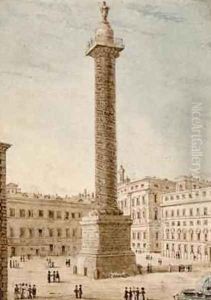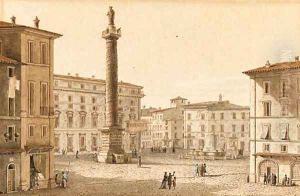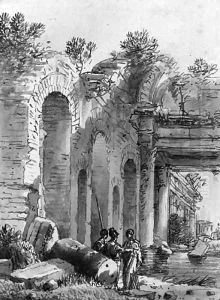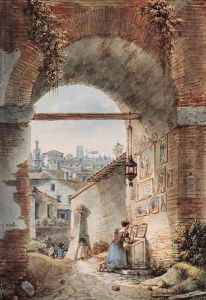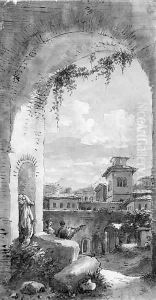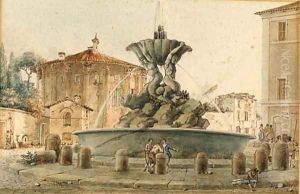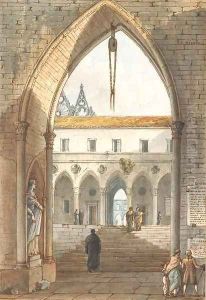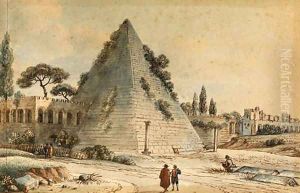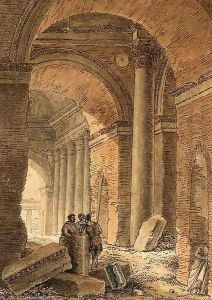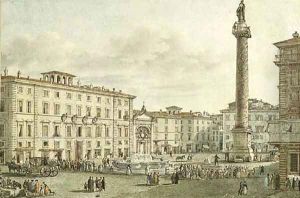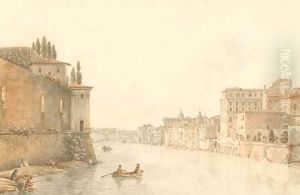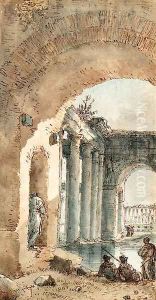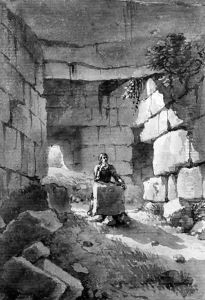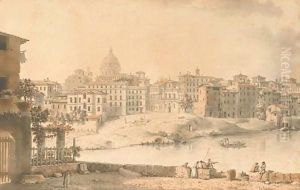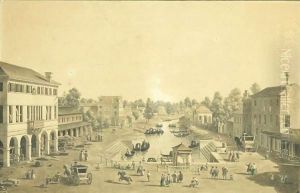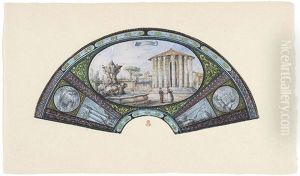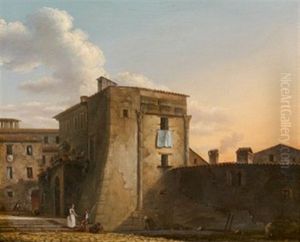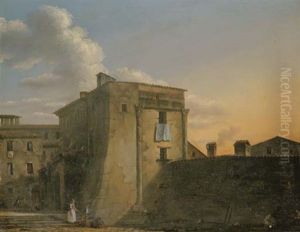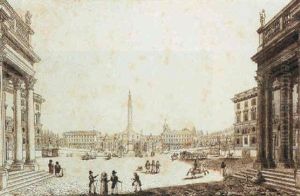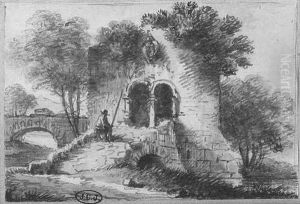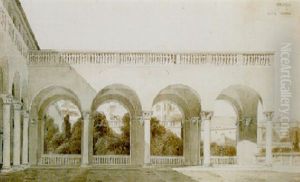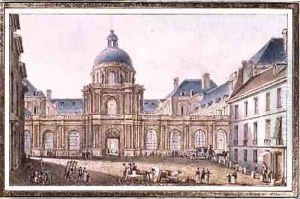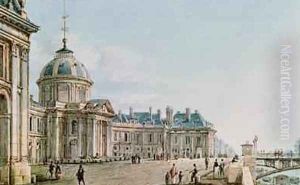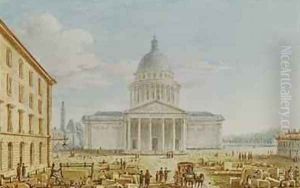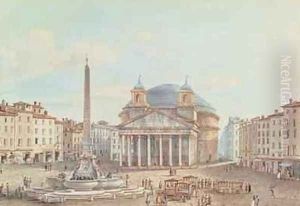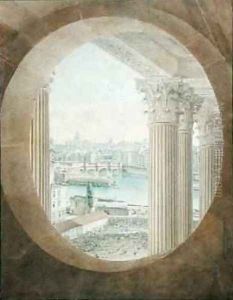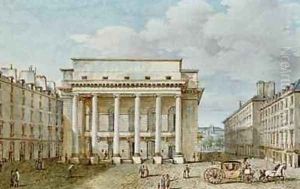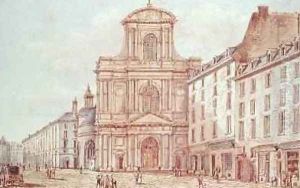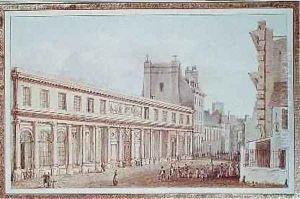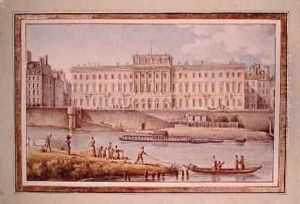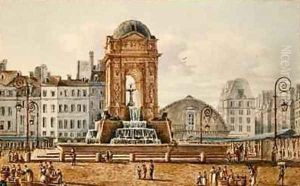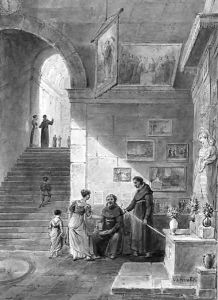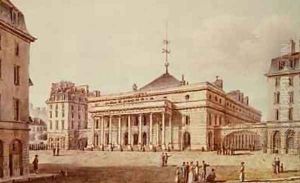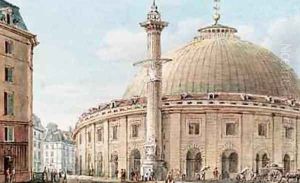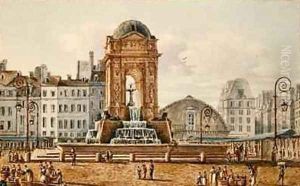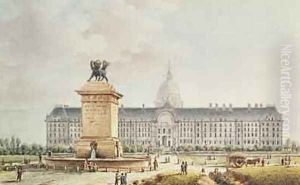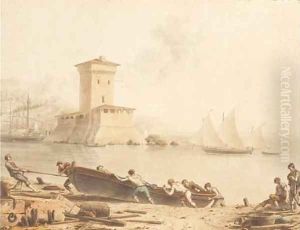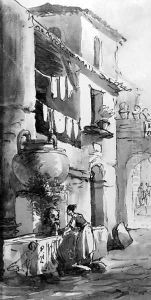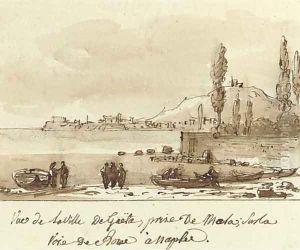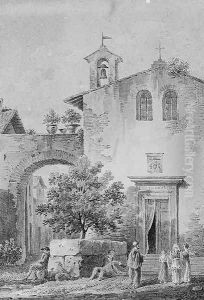Victor Jean Nicolle Paintings
Victor Jean Nicolle, born in 1754, was a French artist known for his contributions as a draftsman and watercolorist. Nicolle's artistic journey began under the tutelage of his father, who was a fan maker. He later studied with the history painter Gabriel-François Doyen, which significantly influenced his artistic development. Nicolle's works often depict architectural views and landscapes, capturing the essence of French and Italian scenery with a particular focus on the details of urban architecture.
Nicolle's penchant for travel and interest in architectural forms led him to Italy, where he spent a considerable time in Rome. The influence of Italian culture and architecture was evident in his works, which often featured Roman monuments and the city's distinctive urban landscape. His Italian experiences played a crucial role in shaping his style, which was characterized by a meticulous attention to detail and a fascination with the play of light and shadow.
After his return to France, Nicolle continued to produce drawings and watercolors that reflected his travels. His works from this period show a keen observation of daily life and the urban environment. The French Revolution and the subsequent Napoleonic era provided new subjects for his art, as he depicted the changing face of Paris and other French cities during this tumultuous period.
In addition to his cityscapes, Nicolle was also known for producing costume studies, which provided valuable insights into the fashion and social customs of his time. His attention to the intricacies of clothing and the accurate portrayal of various social classes added another dimension to his artistic repertoire.
Victor Jean Nicolle's legacy is preserved through his extensive body of work, which provides a visual documentary of the urban and social landscapes of late 18th and early 19th century France and Italy. His drawings and watercolors remain valuable to art historians and enthusiasts for their historical significance and artistic merit. Nicolle passed away in 1826, leaving behind a rich collection of artworks that continue to be studied and admired.
